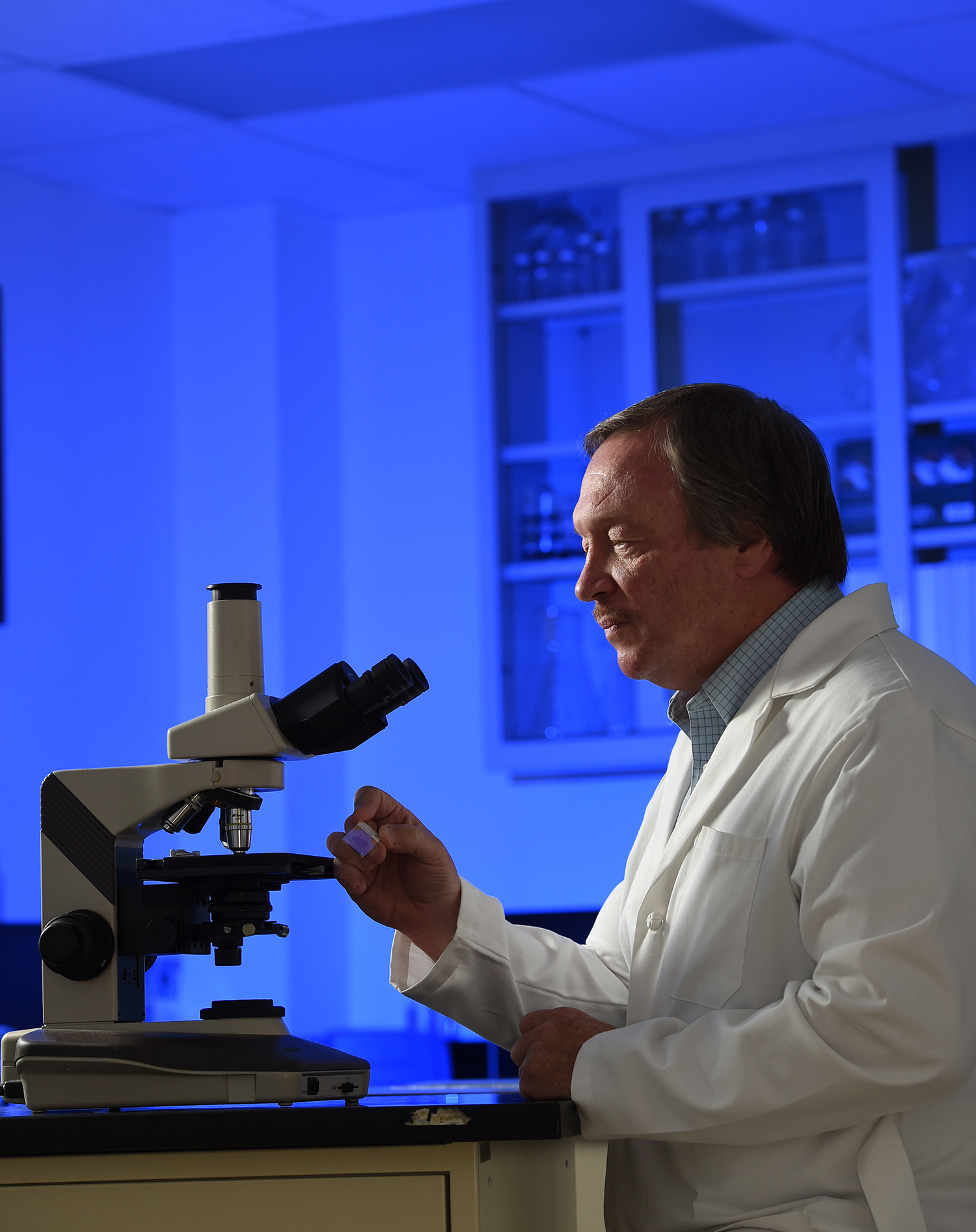Rowan researchers closing in on blood tests for Alzheimer’s and Parkinson’s diseases
Rowan researchers closing in on blood tests for Alzheimer’s and Parkinson’s diseases

The history of medical science has taught one lesson above all others: nearly every disease can be beaten if detected and treated early enough.
With that in mind, scientists around the world are in a race to be the first to discover the earliest moments when diseases begin, in hopes of finding new treatments or cures for those diseases that have resisted all other therapies. Much of that race focuses on biomarkers, the measurable substances in the body that can act as the earliest evidence of disease, injury or infection.
Robert Nagele, a professor at the New Jersey Institute for Successful Aging at the Rowan University School of Osteopathic Medicine, is among the leaders in this crowded, worldwide pursuit of biomarkers. His research has yielded promising results in the discovery of blood-borne biomarkers for Alzheimer’s and Parkinson’s diseases, the two most common neurological diseases affecting older adults.
In his lab on Rowan’s Stratford campus, Nagele has led a team of scientists and students from the School of Osteopathic Medicine and from Rowan’s Graduate School of Biomedical Sciences in developing a blood test that searches out autoantibodies, the naturally occurring proteins in the blood that ‘clean up’ cellular debris generated from the body’s own tissues and organs. Nagele’s research has identified a small number of autoantibodies – selected from among the thousands that occur in the blood – that can act as biomarkers for both Parkinson’s and Alzheimer’s diseases.
The goal of this blood test is to use these specific autoantibodies to accurately detect the presence of Alzheimer’s and Parkinson’s diseases long before symptoms emerge. In a recently published study, Nagele’s research team revealed results of a large study they conducted. The study involved nearly 400 subjects and showed that the blood test not only can accurately detect early-stage Parkinson’s disease, but it can also distinguish between early- and later-stages of the disease.
“Currently, there is no simple and reliable diagnostic test for Parkinson’s disease,” Nagele said. “Instead, diagnosis relies on clinical observation of patients’ symptoms and is only accurate about three-quarters of the time. An accurate, inexpensive and relatively non-invasive test for early-stage Parkinson’s could have a profound impact that leads to earlier treatment of patients, the ability of physicians to monitor their patient’s progress while under treatment and allows for early enrollment of patients into clinical trials.”
Researchers widely acknowledge that Alzheimer’s and Parkinson’s diseases attack the brain years before symptoms emerge. Detecting autoantibody biomarkers in the blood at the preclinical stage would give patients an opportunity to work with their physician to receive available treatments and/or make lifestyle changes before becoming symptomatic. Potentially, this early intervention could help avoid or delay the most devastating aspects of their disease.
“There are significant benefits to early disease detection because we now know that many of the same conditions that lead to vascular disease are also significant risk factors for Alzheimer’s and Parkinson’s diseases. People found to be at preclinical disease stages can take steps to improve their vascular health, including watching their diet, exercising regularly and managing any weight and blood pressure issues to help stave off or slow disease progression,” Nagele said.
Nagele also noted that a diagnostic test capable of distinguishing different stages of disease severity could also be a significant benefit to patients, physicians and researchers. The ability of a test to measure those changes makes it possible to follow a patient’s disease course, rate of progression and response to therapies.
An aging baby boom generation that is now crossing the threshold into retirement years increases the urgency to find new ways to diagnose and treat age-related diseases like Alzheimer’s and Parkinson’s. Already one million Americans suffer from Parkinson’s disease, with 60,000 more cases diagnosed annually.
The impact of Alzheimer’s disease is even greater. More than five million Americans currently have Alzheimer’s with that number expected to grow to nearly 14 million by the year 2050. This year, the combined cost of care for individuals with these diseases is estimated to be more than $250 billion in the United States alone.
Nagele’s research has been supported by grants from The Michael J. Fox Foundation and the Osteopathic Heritage Foundation.